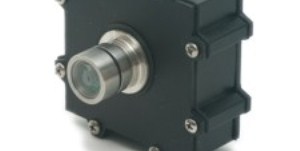|
Infra-Red Fire & Heat Detectors
The detectors are designed to detect the changes in these emissions that occur when
a hot body enters the field of view of the detector. By the use of both optical
filtering and electronic analysis of the various parameters the system is blind
to visible light from the sun or local luminaires, whilst being able to detect relatively
low temperature material moving through the field of view.
|
|

|
|
The system is suited to situations where material or equipment that has a fire initiating
potential is being moved. For example, the system can detect and prevent a FIRE
from being imported into a protected area, as in the case of a burning road or rail
vehicle entering a tunnel or building. In addition the system can monitor for materials
in transit, which have not yet reached a flame condition, but have sufficient energy
to initiate a fire upon arrival at their destination. A typical example is in the
coal feed systems on power stations where coal on the ‘out field stack’ may very
well smoulder with little adverse effect for long periods of time. However, if imported
to the power station it may have devastating effects on conveyor systems, holding
hoppers, blending plants, etc.
The system comprises two primary elements - the sensor unit and an air supply. The
latter is required such that a positive air pressure is maintained at the sensor
unit optical lens aperture, thus preventing dust settling on the detector windows.
This air purging is essential in dusty environments such as coal conveyors, and
is recommended in even relatively clean applications. An air purge blower and unit
are employed when an ‘on site’ clean air supply is not available. The sensor unit
is located above or beside the materials transit path (conveyor, roadway, etc.)
by means of the adjustable mounting bracket and aligned such that the monitored
hazard passes through the sensor’s field of view. The distance and angle of the
sensor determine the width of the monitored path. Typically conveyor widths of 1.6
to 4.2 m can be monitored with a sensor mounted 1.0 to 1.5 m above the conveyor
at an angle of 0° to 55°. The air supply is monitored by a pressure switch which
on air failure is signaled as a fault status. Alarm (Fire) conditions may be set
for double knock operation. An internal multi-pole switch permits the various configuration
selections.
|